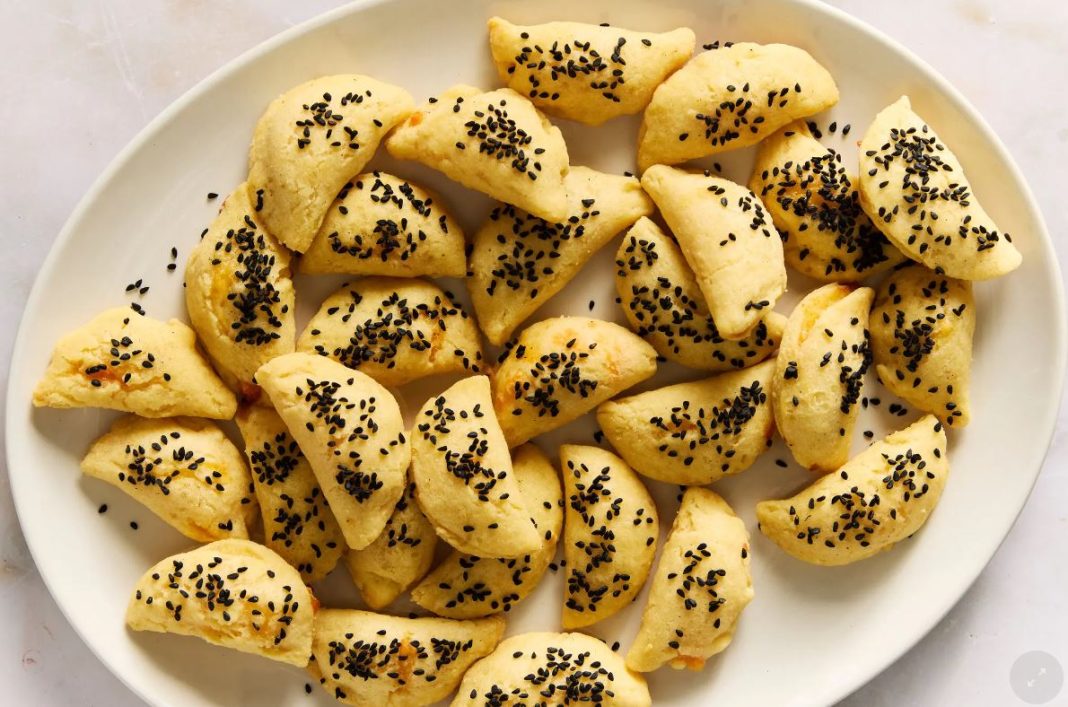In Brooklyn’s Aleppan Jewish community, a unique culinary tradition thrives, especially during Hanukkah – the art of crafting tiny meat- or cheese-filled pastries known as sambousek. For these individuals, the smaller the pastry, the greater the culinary prowess. However, their distinctive traditions extend beyond mere pastry size; they illuminate the fusion of cultural history and cherished recipes.
The Aleppan Jewish community, based in Bensonhurst, Brooklyn, prides itself on its customs and culinary heritage. During Hanukkah, the lighting of the menorah is not a routine affair. Instead of one candle, two are used, symbolizing both the miracle of light and the gratitude the community harbors for the refuge they found in Syria after escaping the Inquisition.
Among those who uphold this rich heritage is 92-year-old Rachel Harary Gindi, who vividly recalls her mother’s gatherings to make sambousek, a treat reserved for special occasions like holidays. Her fondness for the cheese-filled sambousek, a Sunday evening delight, resonates with the warmth of familial traditions.
In 1941, Rachel’s family relocated to New Orleans, bringing with them the flavors and customs of their tight-knit community. Despite the culture shock, the family maintained a connection to their roots, congregating each summer in Bradley Beach, N.J., with the broader community. It was there that Rachel met her husband, Jack, at the tender age of 16. Subsequently, they married and moved to Los Angeles the following year.
Rachel’s culinary journey began under the tutelage of her mother-in-law, an Aleppo native. Despite her young age at marriage, Rachel absorbed the culinary wisdom passed down by her mother-in-law, whose traditional dishes included kibbe hamdeh (sour salt soup with potatoes, carrots, and tiny meatballs) and edja patate (a potato pancake flavored with allspice).
The heart of the community’s culinary identity, sambousek, has a storied history. Originating from the Persian word for “triangle,” sambousek has traversed regions from Spanish Andalusia to India since the Middle Ages. Food historian Nawal Nasrallah suggests that sambousek was among the dishes that journeyed eastward to India in the 10th century. Remarkably, four recipes for sambousek appear in a 13th-century Aleppan cookbook, underscoring its historical significance.
For Rachel Gindi, cheese sambousek has been a constant presence at dairy meals, including those during Hanukkah. Over the years, subtle adaptations have occurred. The original use of Miller’s Muenster cheese yielded to shredded mozzarella and kashkaval, reflecting changes in kosher market availability. The dough, once a blend of flour and semolina, transitioned to a purely flour-based mixture over 50 years ago.
Despite contemporary methods, Rachel adheres to tradition, using a memorial Yahrzeit glass to cut the dough. Her technique involves pinching the pastry closed with her thumb and second finger, creating an exquisite fluted edge reminiscent of scallop shells. The resulting pastries are intentionally tiny, offering just a couple of bites per piece.
As the custodian of these culinary traditions, Rachel has passed on her expertise to Mercedes Borda, her housekeeper of 39 years. The cheese sambousek recipe, among the first taught, remains a fixture in Rachel’s household. The pastries are either stored in the freezer or freshly baked to satiate the appetites of Rachel’s children, grandchildren, and great-grandchildren.
In Rachel’s kitchen, tradition is paramount. Observing Mercedes’ slight departure from custom – using a fork to press the tines into the dough, a technique learned from her native Bolivia – Rachel steps in, ensuring that the essence of the Aleppan Jewish community’s culinary legacy endures. In this community, traditions do not merely survive; they thrive, leaving an indelible mark on generations to come.

